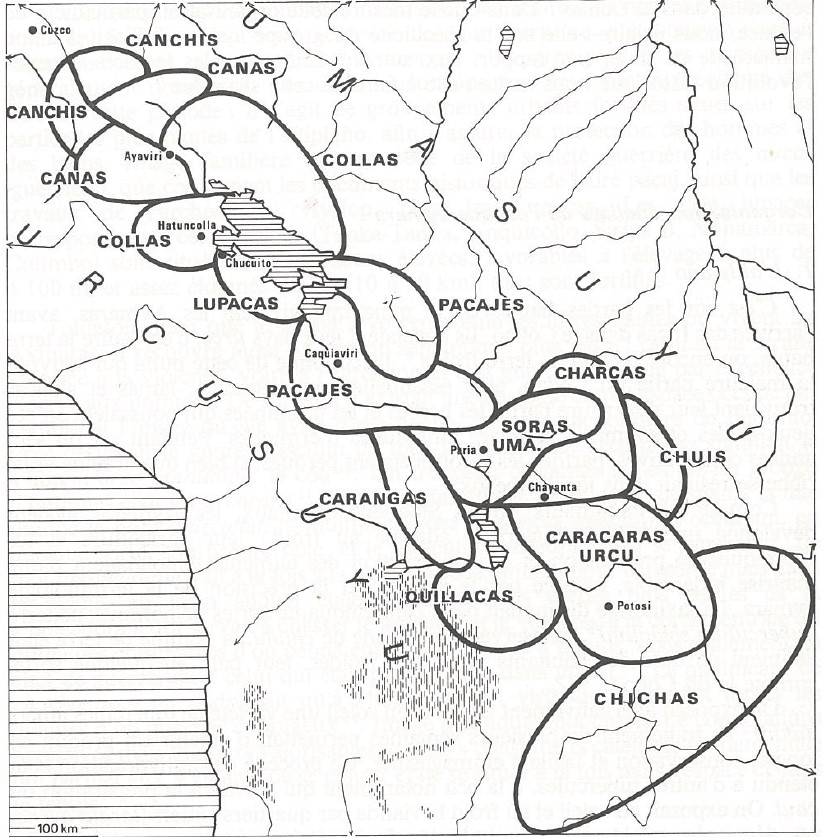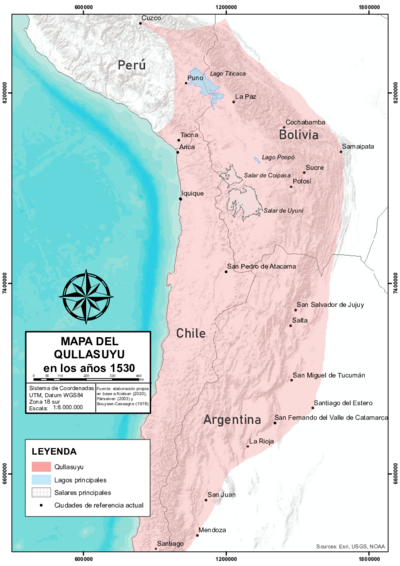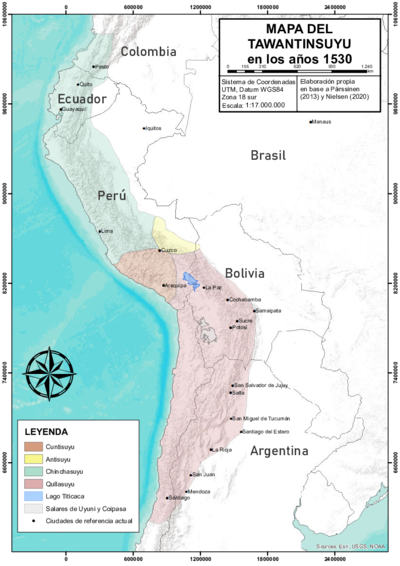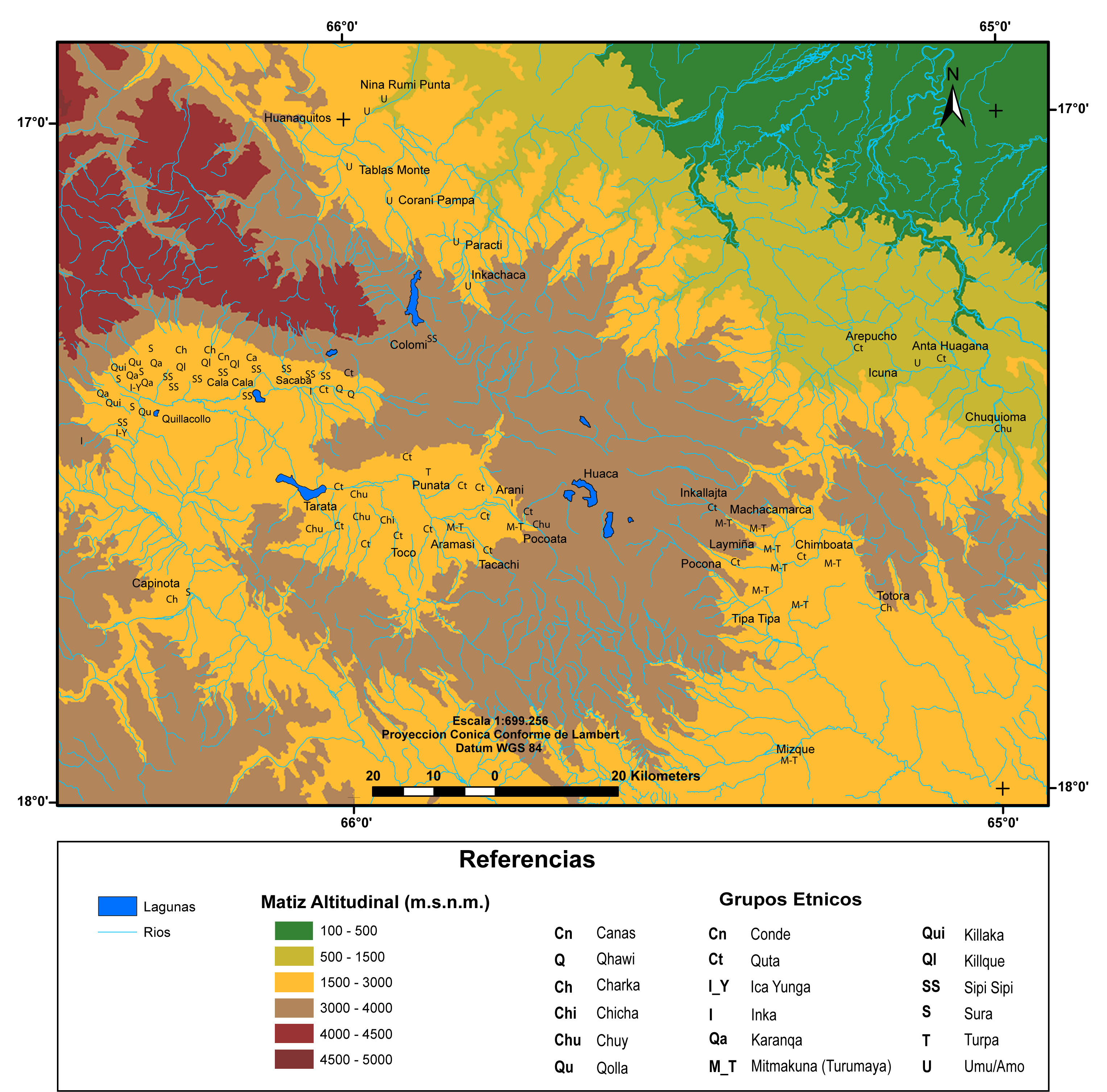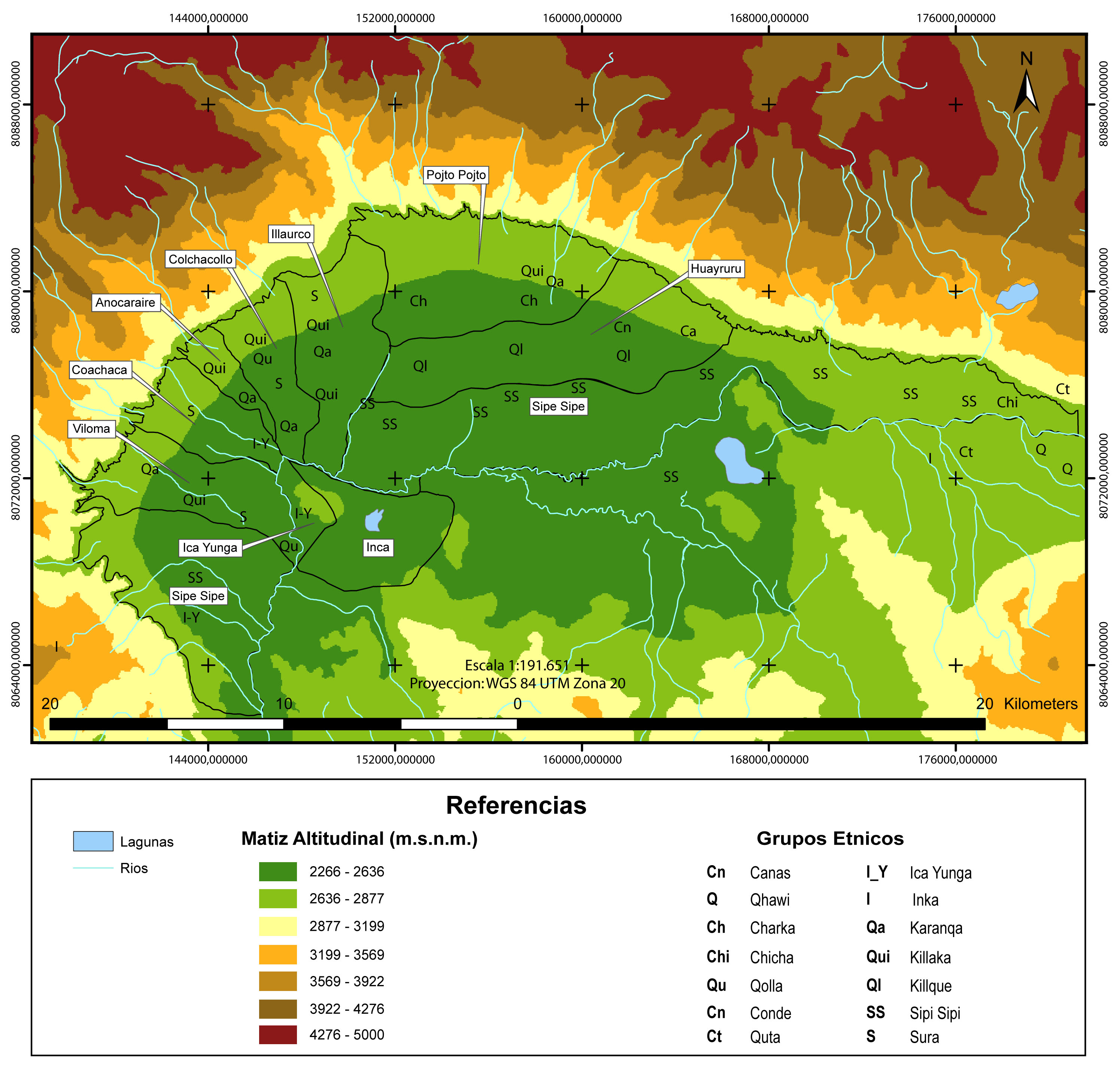Abstract
This map shows the Indigenous territories located in the inter-Andean valleys that were officially recognized by the Plurinational State of Bolivia in 2011.[^1]The map locates the Indigenous peoples that inhabit certain territorial units in these valleys who have received property titles, which grant them the right to collective ownership of their territories. Within these territories, they have the right to apply their own forms of economic, political, social and cultural organization, as well as the right to the use and management of all renewable resources.1 As per the 2009 Bolivian Constitution, this collective good is inalienable, indivisible, irreversible, unseizable and imprescriptible.2 In pre-colonial times, the inter-Andean valleys were an integral part of the Qullasuyu, that is, the southern district of the Inca state or Tawantinsuyu.
It should be noted that the official name of the Indigenous Territories according to the current legislation of the Plurinational State of Bolivia is “Territorios Indígenas Originarios Campesinos” (TIOCs). The purpose of this wording and term is to acknowledge the names used by the different Indigenous peoples to identify themselves, which have varied throughout the different historical periods and are still fully valid today.
In pre-colonial times, parts of the valleys adjacent to the altiplano were integrated into the territories of the Aymara polities AYMARA POLITIES of THE QULLASUYU in the 16th CENTURY . Other parts (i.e., the large and fertile valleys of Cochabamba) were claimed as Inca state property for large-scale maize production. Along the eastern boundaries of these valleys, the Incas built fortresses to protect their expanding borders. By relocating large segments of the population from different regions of Tawantinsuyu, the Incas converted these areas claimed as state property into multi-ethnic MULTI-ETHNIC TERRITORY under INCA DIRECT RULE: THE CENTRAL AND UPPER VALLEYS OF COCHABAMBA in the 1530s territories MULTI-ETHNIC TERRITORY under INCA DIRECT RULE: THE LOWER VALLEY OF COCHABAMBA in the 1530s that would be ruled by Inca officials through direct rule.
Under Spanish colonial rule, most of these valleys became strongholds of Spanish landowners who acquired large private properties (haciendas or latifundios) and turned the Indigenous population into hacienda peasants subject to an oppressive regime of servile relations. The hacienda regime continued after independence until the Agrarian Reform of 1953, when land was re-distributed among the hacienda peasants, who received individual titles to the plots allotted to them. This process led to the development of peasant unions, commonly known as peasant communities. Today, these Indigenous peasant communities are generally Qhishwa-speaking and tend to identify themselves as members of the Qhishwa/Quechua nation.
51% of the area of MAP OF TITLED INDIGENOUS TERRITORIES (TIOC) IN BOLIVIA, AS OF 2011 titled TIOCs in the Inter-Andean Valleys is in the department of Potosí, broken down into 101 titled TIOCs, comprising 2.2 million hectares. These represent 10% of the total area of titled TIOCs in the country.
REFERENCES:
Albó, Xavier and Carlos Romero. Autonomías Indígenas en la Realidad Boliviana y su Nueva Constitución. La Paz, Bolivia: Vicepresidencia del Estado Plurinacional de Bolivia, 2009.
Plurinational State of Bolivia. Constitución Política del Estado. La Paz, Bolivia: Gaceta Oficial del Estado Plurinacional de Bolivia, 2009.
Fundación Tierra. Territorios Indígenas Originarios Campesinos en Bolivia. Entre la Loma Santa y la Pachamama, Report 2011. La Paz, Bolivia: Terra Foundation, 2011.
Plurinational State of Bolivia, Constitución Política del Estado, Artículos 30, 289-290, 403. Fundación Tierra, Territorios Indígena Originario Campesinos en Bolivia; Xavier Albó and Carlos Romero, *Autonomías Indígenas en la Realidad Boliviana y su Nueva Constitución (*La Paz, Bolivia: Vicepresidencia del Estado Plurinacional de Bolivia, 2009). ↩︎
Plurinational State of Bolivia, Constitución Política del Estado, Article 394.III ↩︎

